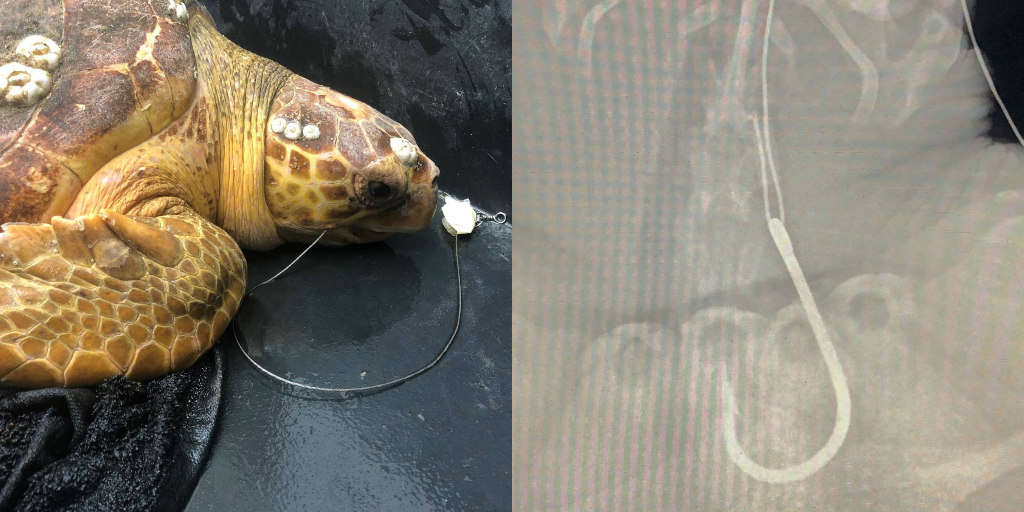
However, they can still cause significant damage.

Hawksbill and green sea turtles are quite commonly affected by fish hook ingestion too, but these tend to be smaller hooks which are commonly used for reef fishing. All of our patients receive x-rays on admission as it is common for a sea turtle to show no outward signs of fish hook ingestion. Thankfully, they are very quick and easy to diagnose with x-rays and this allows us to take swift action in removing them. These hooks are incredibly sharp and will frequently perforate through their soft tissues, causing a huge amount of trauma and lead to infection. These will often be found lodged in their mouth or oesophagus, but unfortunately can also have passed much further down into their stomach or beyond. While olive ridleys are predominantly encountered entangled in ghost gear in the Maldives, we do sometimes find them and other species having ingested large long-line fishing hooks, the kind that are used to catch tuna out in the open ocean. Turtle release program is not everyday, and there is no schedule for the baby turtle release. Fortunately, three flippered turtles can do incredibly well back out in the ocean, which we know from witnessing three flippered turtles swimming very capably and even nesting in the wild. Sea turtle hatching season is from approximately April to October each year. A significant proportion of our patients arrive at our Rescue Centre with flippers already missing or in the process of loss and therefore are unsalvageable even with medical interventions.

Our aim is always to preserve as much limb as possible, however, due to where the ghost gear usually constricts, most turtles end up with a complete amputation at the shoulder joint. Background to the sea turtle programme Educating the local community about the importance of sea turtles and the environment (plastic, littering etc.) Provide.

Unfortunately, if the bones are broken, it can be very challenging to salvage the limb and amputation is often required. This allows the healthy tissue to thrive and ensures the quickest possible healing times. They also often require daily removal of dead tissue, a process called debridement. However, things are tough in the modern era when you are a slow breeding, long-lived reptile. Turtles have seen the Earth undergo many changes over time and managed to survive them all. Lacerations and deep wounds are typically treated with a combination of daily wound care, consisting of disinfection, application of topical treatments like antibiotic creams and manuka honey, and are dressed with waterproof bandages. Sea Turtle Foundation is a non-profit, non-government group based in Australia working to protect sea turtles through research, education and action.


 0 kommentar(er)
0 kommentar(er)
